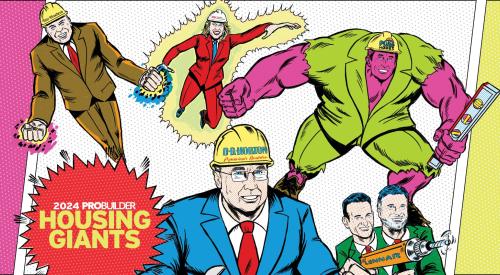|
Public home builders are not the only ones drowning in a sea of red ink flowing from vast tracts of impaired land. In the mid-2000s feeding frenzy, the largest public builders got their snouts in the trough of overpriced land deeper than any private builder. Just check out these descriptions from Wall Street stock analyst David Goldberg of UBS Securities of some of the most significant impairments since the early days of the housing crash in mid-2006:
Centex: $2.1 billion from land impairment charges (including $213 million in joint ventures), $454 million from forfeiture of option deposit and pre-acquisition costs, goodwill of $61 million
D.R. Horton: $1.6 billion of impairments on owned lots, $234 million from forfeiture of option deposits and pre-acquisition costs. Also includes $474 million of goodwill impairments.
KB Home: $1.6 billion of inventory impairments (including $215 million from joint ventures), $288 million of option impairments, goodwill write-offs of $108 million.
Lennar: $2.1 billion of inventory adjustments (including $623 million from joint ventures), $682 million of write-offs of option deposits, goodwill write-offs of $190 million. Excludes $740 million loss related to land sale to Morgan Stanley.
Pulte: Approximately $2.1 billion in on-balance-sheet impairments, $390 million in write-offs of land deposits and pre-acquisition costs, $286 million in impairment charges related to land held in joint ventures. Also includes goodwill write-off of $370 million.
Stock analyst Carl Reichardt of Wachovia Securities says the public builders usually report their margin numbers before impairments for very good reason: "If they reported them after impairments, those numbers would be mostly large and negative."
However, Reichardt notes that reporting margin numbers before impairments does give a better picture of what's going on in the present tense. "Impairments really relate to future communities and homes rather than what the builder delivered in the most recent reporting period," he says. "Most of these companies have very small margins before impairments. If they include them, it flips over to huge negative margins. Let's face it, margins suck for these companies."
One industry insider, privy to senior management, estimated that if the current housing downturn persists into 2010, as many as half the Top 10 builders would not survive.
Check out the rest of the analysis for this year's Giant 400 report:
- Sound Retreat for This Year's Giant 400
- Rental Apartments Poised for Liftoff
- Sun Cuts Clouds Over Manufactured Housing
- Where Are We Heading?
- View the 2008 Giant 400 List
|












